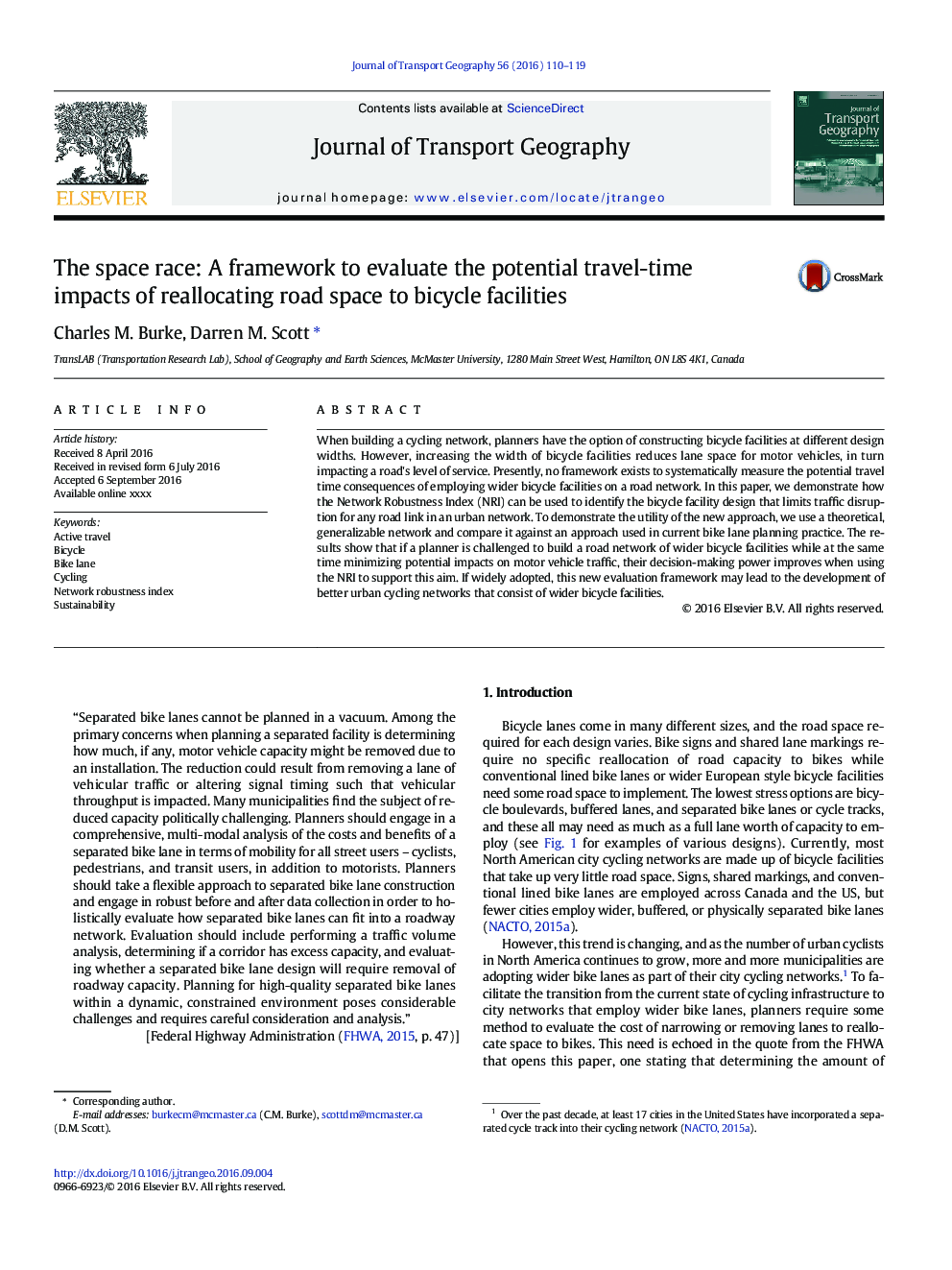| Article ID | Journal | Published Year | Pages | File Type |
|---|---|---|---|---|
| 7485281 | Journal of Transport Geography | 2016 | 10 Pages |
Abstract
When building a cycling network, planners have the option of constructing bicycle facilities at different design widths. However, increasing the width of bicycle facilities reduces lane space for motor vehicles, in turn impacting a road's level of service. Presently, no framework exists to systematically measure the potential travel time consequences of employing wider bicycle facilities on a road network. In this paper, we demonstrate how the Network Robustness Index (NRI) can be used to identify the bicycle facility design that limits traffic disruption for any road link in an urban network. To demonstrate the utility of the new approach, we use a theoretical, generalizable network and compare it against an approach used in current bike lane planning practice. The results show that if a planner is challenged to build a road network of wider bicycle facilities while at the same time minimizing potential impacts on motor vehicle traffic, their decision-making power improves when using the NRI to support this aim. If widely adopted, this new evaluation framework may lead to the development of better urban cycling networks that consist of wider bicycle facilities.
Related Topics
Life Sciences
Environmental Science
Environmental Science (General)
Authors
Charles M. Burke, Darren M. Scott,
